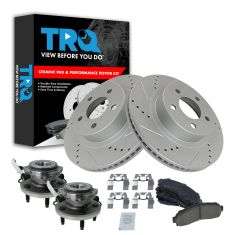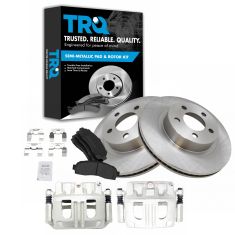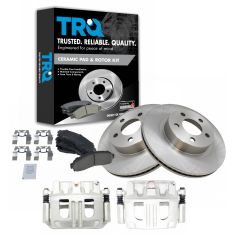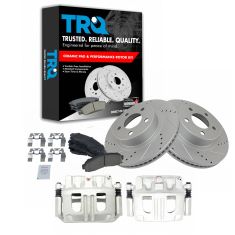1ABMS00095-Ford Mazda Front Ceramic Brake Pad & Rotor Kit with Wheel Bearings TRQ BKA52229
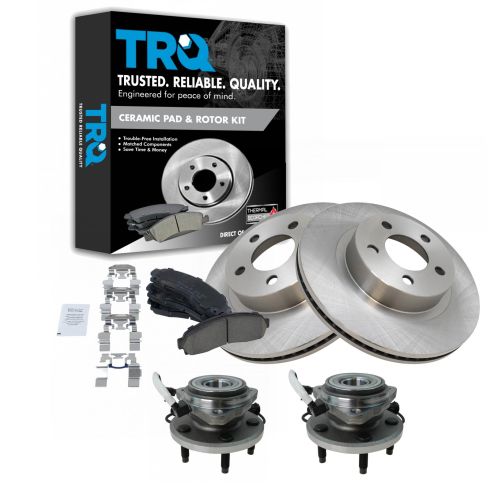
Replaces
2002 Ford Explorer Sport 4 Wheel Drive with 4 Wheel ABS Brakes Front Ceramic Brake Pad & Rotor Kit with Wheel Bearings TRQ BKA52229

Product Reviews
Loading reviews
4.80/ 5.0
10
10 reviews
Purchase review.
June 26, 2017
No problem installing, the most amazing thing was the price we saved over $100 from ordering online. thank you.
Fantastic
October 27, 2017
It cost me less to do all 4 wheels than it would have normally cost to do just one.
Exact fit fast delivery
March 30, 2018
Exact fit fast delivery online help way better than dealing with inexperienced parts kids at o'smilies
Happy with quality and service
July 4, 2018
I received a great service from 1A. Not only did I receive my purchase in less time than expected also was the best price out there.
Great value
October 2, 2018
Only problem was the antilock wire had different connect ors on it ,made it work.
Good product and excellent price
June 19, 2019
This kit solved all my problems. I first contacted 1A Auto a little over a year ago and found the price for this kit (which includes both left and right ) was almost less than just the ABS sensor for one wheel at my local parts store. My ABS system has been chattering for more than a year but I put off fixing it until now. I wish I had bought it last year and fix the problem. It was a little more of a job than what I anticipated because I live in New Hampshire and the rust and corrosion on the hub was severe. My 2007 Ranger feels like a new truck.
Excellent service and value. Fast
June 19, 2020
Great communication. Order came in Timely manner. When one of the major parts was damaged in shipping, they shipped another out with no problem.
Great value
August 24, 2020
I used this kit to repair/ service my 2007 Fx4 Ford Ranger. the kit fitted like a dream. All of the parts were there and it cured the low speed chattering I was getting from my ABS (driver side sensor)
I wish I had done this a year ago. Hardest part was getting the wheels off! the local garage had them torqued excessively.
Really did not expect it to be such a high quality product.
It arrived on time and was well packaged.
Perfect fit. Easy install
November 16, 2020
I replaced the front brakes and wheel bearings on my 04 Ford ranger 4x4. The hardest part we getting the old Rusty bolts out. Once I managed that the new parts when right in. Perfect fit. No guessing game. Watched the video a few times. Super fast delivery. Back on the road and ready for many more miles.
July 31, 2024
Great parts and fast shipping.
Customer Q&A
Does this fit the 2wd model?
August 21, 2021
10
I have a four wheel drive ranger. I dont know.
August 23, 2021
SIDNEY L
10
This part will not fit your vehicle, but we may have a part that is listed to fit.
Please enter your vehicle's year make and model in the search bar at the top of the page. This will display parts guaranteed to fit your vehicle. Just be sure to verify all of the information shown in the Vehicle Fit tab before ordering.
August 23, 2021
Cristina P
Ford is a registered trademark of Ford Motor Company. 1A Auto is not affiliated with or sponsored by Ford or Ford Motor Company.
See all trademarks.











